Bearing Witness When It Is Unbearable
I was up most of the night after seeing the image at the bottom of this page, so stop at the big Red Warning label below if you don’t want to see something you can never un-see. I leave a lot of room after the warning so you won’t accidentally see that awful image, so please read this through and just stop at the huge red letters.
Bobcat rehab is the most rewarding, most challenging and most gut wrenching part of our work at Big Cat Rescue.
The moment a call comes in about a bobcat in distress the tension starts to mount. Is it really a bobcat? Can they snap and text a photo? Is it really in need of our help? Can this caller give me enough information that we can find this cat when we get there? Do I know a rehabber who is any closer? Often calls come in from other states where we cannot rehab and release. I feel my heart begin to race as I try to keep the caller calm enough to give me the details I need to make a life or death decision.
Assured that it is a bobcat, it is in peril and I have a close proximation to his location we launch into action. The rescue truck, a Toyota Tundra our Facebook fans helped us win, has a permanent set of nets, carrier, blankets, gloves, etc., but depending on the situation we may also need to take the vet. Despite the fact that animal rescuers frequently break the law and carry controlled drugs across the state and across the country, it’s illegal and we abide by the law.
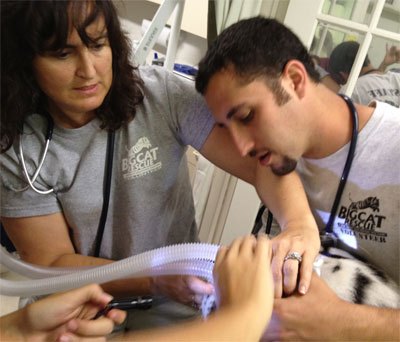 If a bobcat may be mobile enough to outrun us then having our vet come along gives us one more asset to bring the bobcat in safely; a dart rifle and sedation drugs. If you’re reading this, you probably have pets and a vet. Imagine, every few months having to call your vet and ask, “Hey, would you mind dropping everything right this minute and help me go hack my way through the Florida swamps in search of a bobcat that may need to be sedated?” Our vets will usually move Heaven and Earth to help us, but it isn’t always possible for them to hit the road with only a minute’s notice. Our wonderful vets are Dr. Liz Wynn and Dr. Justin Boorstein and they donate their services to our cats.
If a bobcat may be mobile enough to outrun us then having our vet come along gives us one more asset to bring the bobcat in safely; a dart rifle and sedation drugs. If you’re reading this, you probably have pets and a vet. Imagine, every few months having to call your vet and ask, “Hey, would you mind dropping everything right this minute and help me go hack my way through the Florida swamps in search of a bobcat that may need to be sedated?” Our vets will usually move Heaven and Earth to help us, but it isn’t always possible for them to hit the road with only a minute’s notice. Our wonderful vets are Dr. Liz Wynn and Dr. Justin Boorstein and they donate their services to our cats.
The tension only continues to mount as we hit the road because every traffic light, every Sunday driver, every road detour is putting minutes between us being able to save a life or not. We have to be hyper aware of the speed limit because the last thing we need is to be pulled over and detained for precious moments longer. Then there is the arrival.
Most of our calls are because a bobcat has been HBC, which is the short hand the vet’s use on their medical records to say, Hit By Car. That means there is a very real danger that if we come up on the scene wrong we could drive the bobcat right out into traffic again, so we have to strain to assess the situation well in advance of pulling up. Sometimes the caller is on the scene and we have to be patient as they relay all of the non essential, nervous chatter, that seems to go along with seeing a bobcat up close for the first time, to be able to suss out the important information, such as which way the cat went, how long ago and how fast was he moving?
Even if the cat has been laying motionless on the side of the pavement for the last hour, the minute people start walking toward him, he is going to gather up every bit of courage and energy left inside to escape. Not once, in more than 30 years of rescuing bobcats, did one of them lay there and say, “Oh good. You’re here to help.” Even if they are so badly crushed that they cannot sit up, they can always scream like a woman being murdered while slashing razor sharp teeth and claws at your face. Whether the bobcat is making a run for cover or laying on their back trying to kill us with their last breath, we have to be cognizant of the fact that our capture technique could kill the cat if we aren’t careful. They are already suffering and scared out of their minds, so what ever we do next has to weigh the damage we could do to them in their fragile state vs missing an opportunity and losing track of them.
Once we lose sight of them there is only one thing that is certain; they will die a painful and horrific death. I can’t even talk about all of the bobcats that we either never saw, or saw and then lost. Hours and sometimes days went into trying to find them but they were better at hiding than we were at finding, and knowing their fate is what drives us on to do it better the next time.
As I think back over any of the bobcat captures, I’m always left believing that angels guided our nets. Bellona had been one of those bobcats who had laid on the shoulder of the busy highway until we arrived, but the minute we stepped out of the van she ran like nothing you ever saw, swam a creek, ran some more and then tried to swim across a pond, but Chris was able to net her in the water.
Ace the bobcat had been eating out of dumpsters because she could no longer hunt in her aged condition, and had seemed to expire right on the steps to a building, but once our rescue team arrived she ran in and out of hedges and crossing business park roads and parking lots until Jamie nabbed her in a net.
Cypress the bobcat had laid along side the road until just moments before we arrived and then had disappeared into the thick underbrush. Despite her crushed pelvis she managed to drag herself heroically to open water where she must have thought she could out-swim me, but realized too late that she couldn’t tread water with her lifeless lower body pulling her down. Scooping her up in the net and seeing the look in her eyes when she realized that she was either going to drown or be taken by the dreaded human, is a sight I still cannot put out of my head.
And then Ivan; who appeared to be missing a forepaw and yet managed to run, hobbling, ahead of rescuers who lost sight of him for hours. They didn’t give up, and finally Ivan was scooped up in Dr. Justin’s net at the edge of a canal. Until now I didn’t realize how often bobcats will try to lose us by diving into water. Maybe their predators, foxes and coyotes, are typically thrown off the scent this way. Whatever the reason, we can usually count on being covered in mud by the time the bobcat is safely in a cage and heading to the vet. We can also count on being covered in scratches because bobcats know every inch of briar patches in their forest and will dive into that thick, thorny cover as a last ditch effort to evade capture.
By the time the bobcat is in the truck we are bleeding, filthy, dehydrated, hungry and both physically and mentally spent, but this was just the first step of what will be a very long and emotional day.
Next we have to find a veterinarian who will tend to this broken bobcat, at what always seems to be the middle of the night, a weekend or a holiday. We consider ourselves VERY lucky if Dr. Liz Wynn or Dr. Justin Boorstein is available, because most vets are not willing to tend to a wild animal, even though we will pay. Having to educate an outside vet about the differences in drugs, doses, and reactions in wild bobcats is stressful enough and does nothing to reassure us that the bobcat will be getting the best care possible. The novelty of having a wild bobcat in the clinic always brings out the entire staff who want to take photos and excitedly ask questions about the animal while we are trying to hurry the process along so that the bobcat’s suffering is minimal.

The first time we can really take a relaxed breath is when the cat is sedated. At that moment we know the suffering has subsided and that is a huge relief, but it is only the beginning of that next phase of concern. Exotic cats, captive bred or wild born, just don’t deal with anesthesia well. Sometimes they die from it, so we are taking every breath with them and constantly watching the monitors, counting the heart beats under their fur and expecting that any minute the cat is going to crash and all heck will break loose in an attempt to stabilize them.
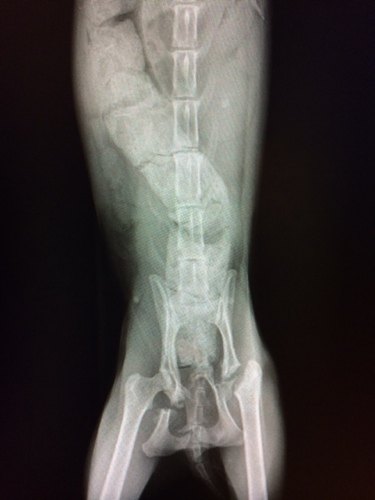
Blood work is done to make sure that the bobcat isn’t carrying some deadly disease. X-rays are taken, and retaken, as the scope of the damage begins to emerge. Sonograms look at vital organs to see if they have been pierced by the shattered bones or the impact of 2,000 lbs of steel hitting the cat at 60 miles per hour. A physical exam is done to asses the trauma to the teeth, bones and flesh because skidding across the pavement can do a lot of damage; even to the tough hide of a bobcat. As the picture of this cat’s condition begins to come into focus, the tension rises again, because now we have to decide:
Can this bobcat be saved?
Can this bobcat ever be set free again? If not, what kind of life will captivity be for them. Very young cats may be able to adapt to life in a cage, but bobcats who have known the freedom of patrolling miles of their home territory, are not likely to tolerate life in a cage. This is one of those impossible moments because a decision has to be made in the next few minutes, but it is a decision that needs far more information than what is usually in front of us. We need input from the bobcat, but they are asleep and we just won’t know what their tolerance level for follow up treatment, or a life in captivity will be.
Money has never been the issue. We have spent over $5,000 to get a bobcat the surgeries they need to pin their broken bones back together, but sometimes these poor cats are so shattered that there just isn’t any way to fix them using technology and we are faced with the dilemma of fixing what we can and giving them quiet cage rest while they call on their resources to mend. Cats of all kinds have a remarkable ability to survive based on the fact that their purr is at the exact frequency that heals bones, muscles, and ligaments. There’s an old saying that’s popular among veterinarians, “If you put a cat and a bunch of broken bones in the same room, the bones will heal.”
So, we usually will opt to have the vets work their magic and then assist the bobcats in working their own. This is an element of our rehab work that sucks in many more of our staff, volunteers and virtual supporters into a vortex of emotion. It is a daily, if not hourly, roller coaster ride of the highs when the bobcat eats on their own, drinks on their own or eliminates on their own and the lows when the bobcat seems so unhappy, or refuses their meds, or gets blocked up. Then we have to make another painful decision:
Was the blockage due to the medications or the bobcat’s poor condition? Should we go ahead and euthanize or should we flush him out now and see if it happens again? We usually opt for the latter, but if it happens again, then we pretty much know that this cat is never going to be able to live a normal life and we aren’t going to prolong that suffering. That’s what happened with Cypress the bobcat.
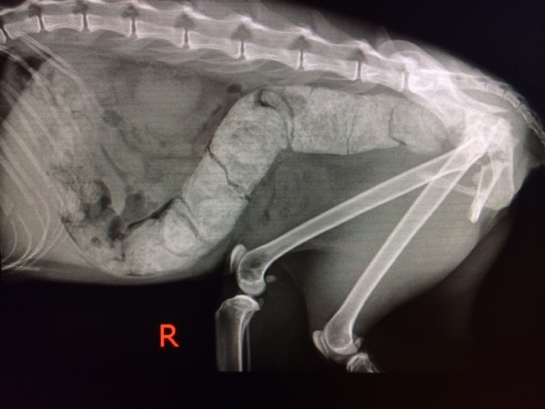
The first time she blocked up we thought it was from the fur in her diet of mice, so we flushed her out and put her on a ground diet. We did X-rays and the pelvis just wasn’t healing with enough room for feces to pass. When she blocked up again, we knew that she would never be able to pass food on her own. Weeks of tense moments, where we watched for every sign of success or failure, ended in a heart breaking decision to euthanize her.
By then we all adored her. We admired her ferocity. We loved watching her on webcams because when no one was around she was quite content to watch the Cat Sitter DVD all day in between long, luxurious naps. We had weeks of building up our hopes that she was going to heal. We had weeks of hand feeding her to make sure she took her medications. We had weeks of prayers, and positive visualization of her at least having a comfortable life here at Big Cat Rescue, even if she couldn’t eat whole prey. We had all of it dashed by the realization that no matter how badly we wanted her to heal, it wasn’t going to happen.
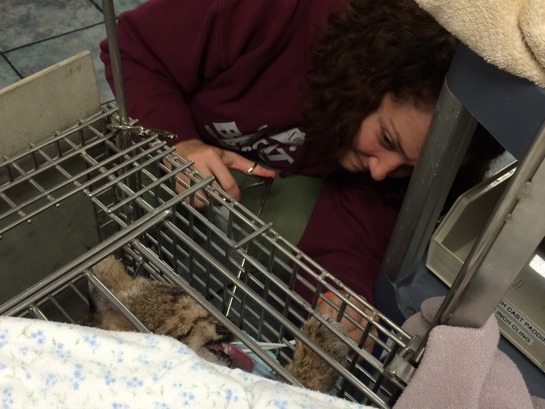
Not even two weeks had passed since we made the tough decision to let her go and the call came in about Ivan. When a cat passes it is our policy to publish the death immediately on our Intranet site, but with 100 volunteers we know that some don’t check the site but once a week, so we don’t publish the death to our social sites for 7 days. For those of us who are on the Intranet site daily, it means we have to go through the entire mourning period twice; once when we tell our own volunteers and then again when we tell the world.
It’s not any easier a week later and may even be harder because we can’t grieve and move on. We have to grieve, wait, expose ourselves to all of the thoughts of second guessing our decisions and then do it all over again next week. For Jamie and I we have to go through it all again when we write it up for the AdvoCat Ezine and The Big Cat Times. All of us who work here have to walk past our cemetery several times a day and go through it all over again. And then the phone rings…
And it is a woman who is watching a bobcat with blood dripping from his paw, she says. She is an hour and a half away and we are off again. What she saw wasn’t blood. It was the shreds of dangling muscle from a paw that had been chewed off. Despite what must have been excruciating pain this bobcat did his best to evade Big Cat Rescuers who were trying to net him and get him to the hospital. It took hours for Jamie, Dr. Justin, and Interns, Lauren and Philip to catch him. Once in the cage they could see that the one leg was completely gnawed off. Ivan (named for all the poison ivy they had to crash through) was deep in towels and blankets in the cage and hunkered down, so they couldn’t see anything more, but had some decisions to make on the way to Animal Coalition of Tampa where he could be sedated and treated.
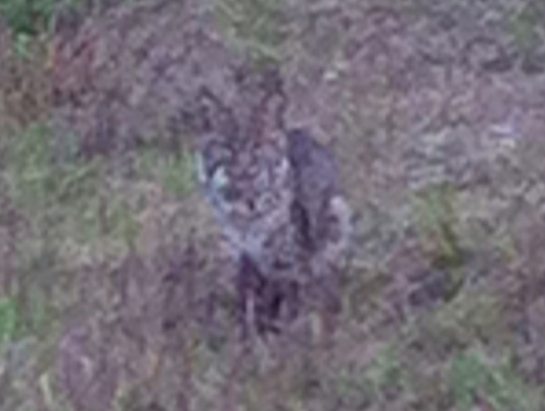
A three legged bobcat would not be a likely candidate for release. The rising and falling swells of emotional current were well under way. We were sad to get the call that a bobcat was hurt. We were scared that we wouldn’t find him and he would suffer an agonizing death. We were elated to spot him and yet terrified that he would elude capture. We were horrified to see that he was missing a leg. We were hopeful that we could save his life. We were optimistic that he may adapt to captivity because he was just a kitten. We were worried about what we might discover once he was sedated and we could get a good look, and then were devastated by what we then saw.
I say, “we” but I was just getting messages by phone and Jamie was keeping me posted. I was sharing the news, as it came in, with our volunteers and supporters. When I saw the image at the bottom of the page my heart rose up into my throat. It was the saddest thing I have ever seen and I’m never going to get that image out of my head. For those of you who can’t bear to look, I’ll tell you, but it’s almost as hard to hear. They discovered when they pulled Ivan out of the towels and blankets that BOTH of his front legs had been chewed off and he had been running on the dry and brittle bones of his forelimbs. The only humane thing to do was euthanize him while he was still asleep.
It made me even more sick to know that my daughter, Jamie, had to see it and that our volunteers had to see it. I am crying at the thought of you seeing it, because it’s the kind of thing you just can’t forget. It’s that harsh awakening to the perils that animals face and once you have been a witness to such an atrocity then how can you bear it?
Since the bobcat was living near a canal, I thought that maybe he had been the survivor of an alligator attack, when I thought he was missing only one paw. It really didn’t seem likely because alligators grab their prey and then roll into the water where they have the advantage of drowning their victims. Any alligator big enough to do this damage would not have been fought off by a bobcat kitten. Had the alligator just bitten off both front legs, the kitten would surely be writhing on the shore and an easy meal.
The only thing that makes sense, is the senseless act of trapping.
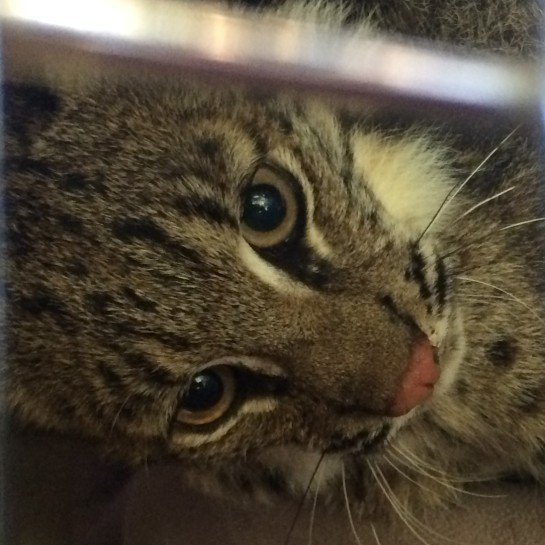
It seems clear that the bobcat kitten stepped into a trap and the only way out was to chew off his crushed and bleeding paws. Dr. Justin said it took several days for the flesh to die back all the way up the legs, leaving the exposed and now brittle bones. Every step the bobcat took had to have sent jolting pain through out his body. Add to that misery that he could not hunt and he was starving to death. I think what haunts me the most is thinking what must have been going through his head. How could he sleep for even a minute knowing he had no defense against some other animal attacking and devouring him? How could he look down, at those missing paws, and see the jutting bones and not be reminded every minute of his vulnerability?
In 1974 Florida became the first state to ban leg hold traps, so we don’t see this sort of thing very often, but it happens all the time in the U.S. I’ve reported this incident to the Florida Wildlife Commission, but in a state where you can buy a permit to kill a bobcat for $25 it is hard to imagine that they will devote any resources to finding the perpetrator. The only good news here is that there is a law against it in Florida. If Ivan had just one thing to ask of you, I think it would be to ask that you bear witness for him and speak out for wild cats everywhere by asking your lawmakers for laws to protect them.
You might be astonished to know how many bobcats and lynx are being trapped and killed in the U.S. for the Russian fur trade. I am not aware of any pending bills regarding the fur industry or trapping, but when such bills do get introduced we will post an easy to send email at CatLaws.com. Please send one of our current letters to protect exotic cats and sign up to hear from us here: CatLaws.com
Calling your lawmaker may seem scary, but that’s nothing compared to the horror that Ivan faced.
WARNING DO NOT SCROLL PAST HERE
If you don’t want to see the poor legless bobcat
.
.
.
.
.
.
.
.
.
.
.
.




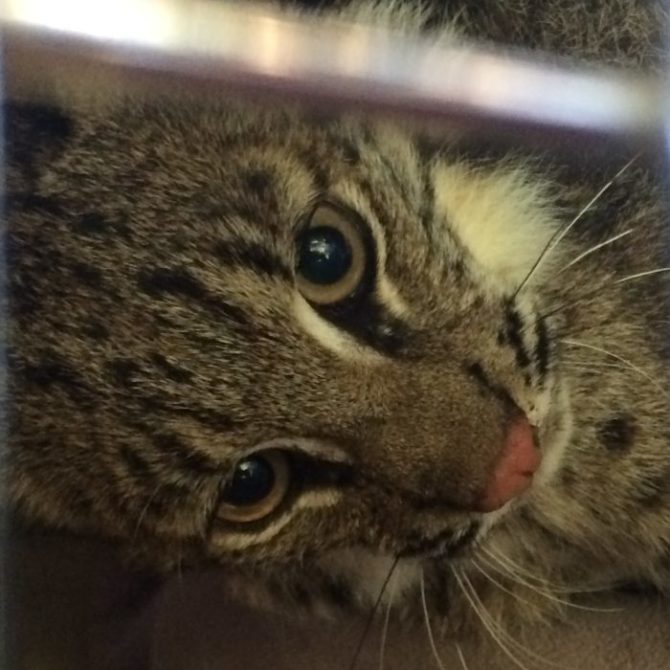
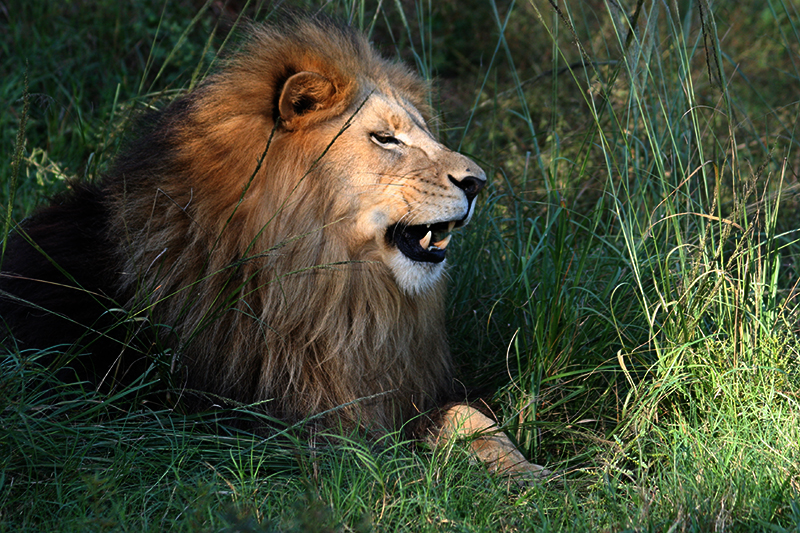
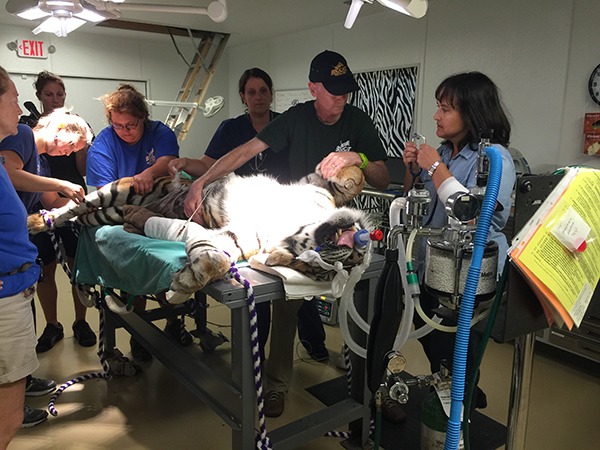
Thank you to all the"Angels" at BCR for what they can, when they can for any injured cat
I am crying our my guts for this little fellow. I can not fully express what I am thinking and feeling in this very moment. The only thing I can do is to thank you all for your work, for going through the hardship to post this story. As hard as it is, it must be told, people have to know and they should take the courage to see the photo and the end of the page and just try to imagine the pain this little innocent creature went though.
I didn't want to look, but I felt I had to because no matter the pain I feel now, crying as I am, I know that it's nothing near what this poor baby had to endure. I love you all for your commitment and compassion to save and heal these cats. People shouldn't hide from these truths as disturbing as they are because this is what these cats have to live with because of humans and we owe it to them to bear witness and speak up on their behalf. Thank you for all the work you do. I'll say a prayer for this baby. God bless.
My cynical suggestion for getting rid of the traps that mangled this poor bobcat? Cry "What about the poor children?"
poor baby. Breaks my heart that Ivan had to live one minute like that
Thank you for what you do.
To all trappers, really and truely this is the only way you can make money and feed your family…… I certainly think not, but hook up with Rubio so you can continue to abuse animals of any sort just so money is made……Mark Rubio is a git and so is any trappers that use inhumane or any other traps to abuse and injure and hurt any animal.
This is probably one of the most disturbing images I have ever seen, but having seen it, it is etched in my mind and I will forever support laws against these types of traps. NO animal deserves this.
OMG, the poor baby. Why are people so cruel. This breaks my heart.
OMG! That poor fur baby. May God keep him in peace. He will no longer feel pain. He will run and hunt in lands of forever plenty. God loves all his creatures. Thank you for helping him. Even though I feel so much sadness at the image, to ignore it and pretend these cruelties don't exist would be wrong. Humans can be extremely cruel, but people like ya'll are proof that we can be just as good too.
RIP sweet bobcat… Run free at the Rainbow Bridge. For a short while, the rescuers of Big Cat Rescue were your guardian angel while you were here on Earth, you are now their guardian angel up in the Heavens…
Trapping is awful. I'm speechless!
Some images need to be seen to be believed and then acted upon–some pain must be shared to mobilize the world to prevent this suffering from continuing unopposed. But Goddess rest the poor bobcat kitten. I wish the days of suffering and pain he experienced from the trap were somehow visited on the trappers–no sentient creature deserves that kind of cruelty! Please continue the noble work you're doing to help these wild ones. I am disabled now and live solely on my social security which is another way of saying on a wing and a prayer so I can no longer contribute financially as I did when I had a regular salary. But I do try to help by advocacy online: petitions and letter campaigns and promoting understanding of animal cruelty issues and stimulating action online through social networking on Facebook Pinterest. etc.
So how did the trap manage to get both front legs at the exact same height?
Maybe it was baited with something that caused the kitten to pounce at it.
Shameful…the acts of so called "superior beings"……My prayers are daily made for the people of compassion and love like yourself, Carol.
how can people be so inhumane?I have no words for this image, it is just gut reging god awful.
Horrendous & heartbreaking!
I still have a hard time believing that trappers say they are necessary and that the traps don't hurt the animal. yes, I've had a trapper tell me that! it may not have been the trap that hurt this poor baby but it is a direct correlation to being trapped that this kitten chewed his own legs off! than you BCR for doing all that you do to help save cats large and small.
I am a cat addict. I love all cats big and small. My heart is broken seeing what some one did to cause this. He is in heaven with Jesus now. whole and pain free. GOD BLESS BCR AND ALL INVOLVED WITH BCR.
I believe that Humans are the parasites of the earth and most don't deserve to live on it with these beautiful creatures!! God Bless You for NEVER giving up!!!
Poor guy! What a horrible situation. The fact that humans were responsible for this is inexcusable. I'm sure that Ivan was grateful that you relieved his suffering. Thank you very much for caring so well for these cats and advocating on their behave.
I felt I owed this kitten and I did look at this horrid picture; trappers are the lowest form of sheer scum imaginable…willing animal torturers that should be crushed like the cockroaches they are.
You are true heroes. I sit here sobbing, and my heart was pounding before I scrolled down after slowly reading the story…deliberating. Can I take it? Probably not. The heroes like you, Jamie, Justin, and Dr. Wynn amaze me because I think I wouldn't be able to take the heartache of witnessing all that pain and suffering. But if everyone turned their back on these beautiful creatures based on the fear of feeling so much, I hate to think what kind of world this would be. Thank you for all you do, every day for these magnificent beings. I am so sorry… <3
I can't imagine the pain this poor fella was feeling. thank God he was found put to rest. shame on anyone that wants to hurt animals, they do feel pain.
I will NEVER understand how any human can deliberately inflict pain upon animals. My greatest thrill is seeing them live the lives they were meant to live, but humans seem to intervene everywhere in every way to the detriment of all species. I am glad you are doing all you can to to release them from their pain, even if it means euthanasia when nothing else can be done.
Man's inhumanity to God's creatures. How pitiable.
I have seen this kind of injury twice in our domestic animal veterinary emergency hospital. Both cases were domestic cats who we assume had been caught in traps. It is soul-crushing to see an animal in such pain and shock. Thank you for trying so hard to rescue this poor by, and for giving him loving release from this lif to his next.
Correcting typos:
I have seen this kind of injury twice in our domestic animal veterinary emergency hospital. Both cases were domestic cats whom we assume had been caught in traps. It is soul-crushing to see an animal in such pain and shock. Thank you for trying so hard to rescue this poor by, and for giving him loving release from this life to his next.
….my heart aches for this poor kitten. Man's cruelty knows no bounds, sometimes…
No other animal does this to another out of spite except man. Even in the hunt, prey who are weakened are quickly killed off by other predators looking for food. We are the only species that maims and kills for the pleasure it brings us. May God have mercy on our souls.
It is so sad Eric what man does to all God's creatures. Thank you for posting this article. I am grateful there are people out there who care!
oh my god! How horrible for this poor baby 🙁 I didnt want to look but felt i owed him that…poor little sweet heart . Human beings are four creatures
If the trap were baited with live bait, I can see a bobcat kitten pouncing in with both legs after the bait. I know some people use a mechanical heartbeat, in an coffee can to simulate the sound of live bait.
That is beautiful. Such a sad & horrifying image of the strong & fierce little bobcat. Thank you.
By the end of the story, I also felt I owed little Ivan and was already in tears. So I ended up looking at the picture, reaching out and stroking the image of Ivan (and I now have to clean my computer screen, but I’m past caring), telling Ivan that even with his devastating injuries he was still a beautiful, brave, and fierce little man. At least he is no longer suffering. RIP Ivan
They need to see this picture & imagine their children in place of this baby. I'm sure they'd hunt down & kill anyone who would do that to THEIR babies. This was a baby who had just as much right to life as any person. Trapping needs to be a felony nationwide!!
Oh my gosh.. .. my heart sinks for this beautiful bobcat. The only shred of comfort I can take is knowing he is happy on the Other Side now, at peace and surrouded by love. No pain ever again.